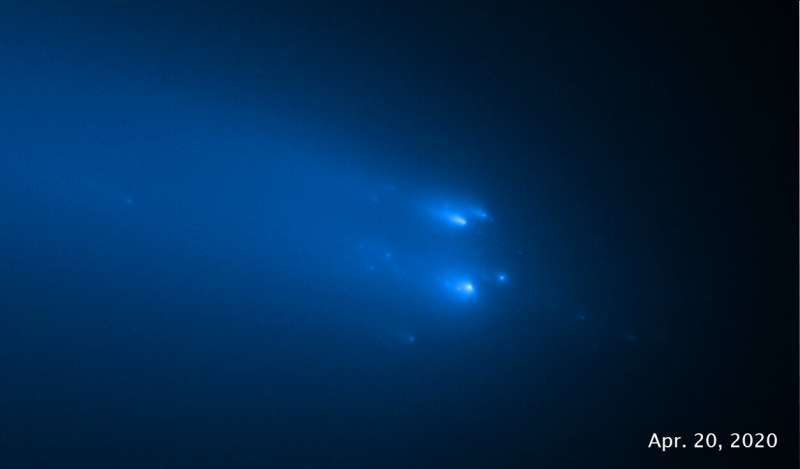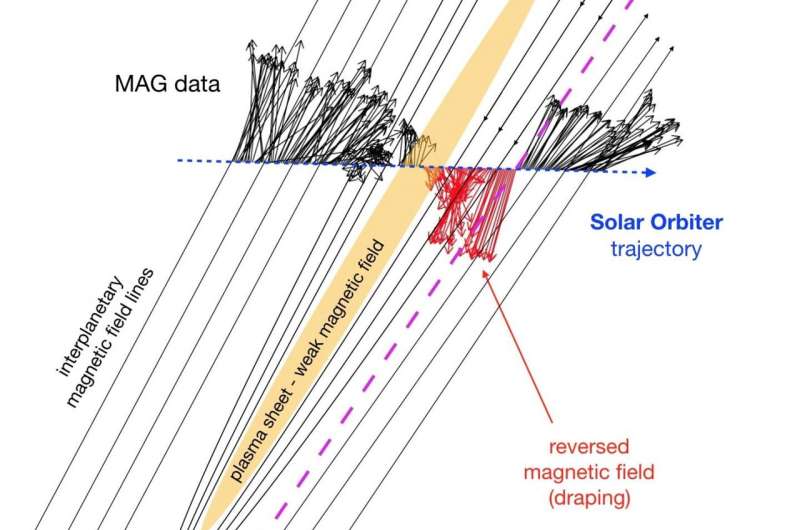A serendipitous flythrough of the tail of a disintegrated comet has offered scientists a unique opportunity to study these remarkable structures, in new research presented today at the National Astronomy Meeting 2021.
Comet ATLAS fragmented just before its closest approach to the Sun last year, leaving its former tail trailing through space in the form of wispy clouds of dust and charged particles. The disintegration was observed by the Hubble Space Telescope in April 2020, but more recently the ESA spacecraft Solar Orbiter has flown close to the tail remnants in the course of its ongoing mission.
This lucky encounter has presented researchers with a unique opportunity to investigate the structure of an isolated cometary tail. Using combined measurements from all of Solar Orbiter's in-situ instruments, the scientists have reconstructed the encounter with ATLAS's tail. The resulting model indicates that the ambient interplanetary magnetic field carried by the solar wind 'drapes' around the comet, and surrounds a central tail region with a weaker magnetic field.
Comets are typically characterized by two separate tails; one is the well-known bright and curved dust tail, the other—typically fainter—is the ion tail. The ion tail originates from the interaction between the cometary gas and the surrounding solar wind, the hot gas of charged particles that constantly blows from the Sun and permeates the whole Solar System.

When the solar wind interacts with a solid obstacle, like a comet, its magnetic field is thought to bend and 'drape' around it. The simultaneous presence of magnetic field draping and cometary ions released by the melting of the icy nucleus then produces the characteristic second ion tail, which can extend for large distances downstream from the comet's nucleus.
Lorenzo Matteini, a solar physicist at Imperial College London and leader of the work, says that "this is quite a unique event, and an exciting opportunity for us to study the makeup and structure of comet tails in unprecedented detail. Hopefully with the Parker Solar Probe and Solar Orbiter now orbiting the Sun closer than ever before, these events may become much more common in future!"
This is the first comet tail detection occurring so close to the Sun—well inside the orbit of Venus. It is also one of the very few cases where scientists have been able to make direct measurements from a fragmented comet. Data from this encounter is expected to contribute greatly to our understanding of the interaction of comets with the solar wind and the structure and formation of their ion tails.
Explore further



